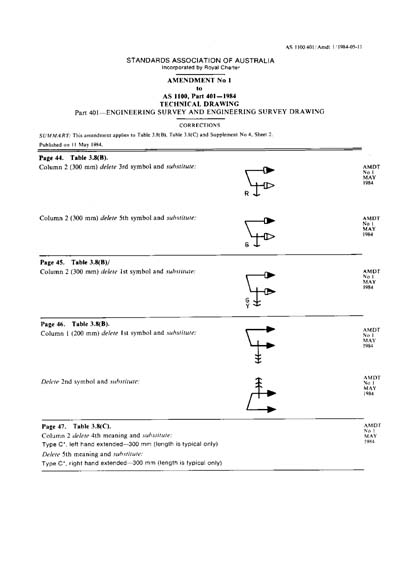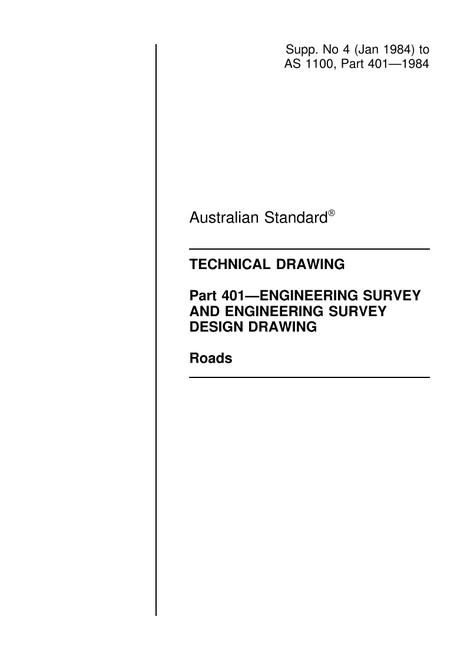Other Standards. NOTE: All drawings in this Standard are drawn in third angle projection unless otherwise stated. See Clause 6.3.3. 1.2 APPLICATION The basic principles given in this Standard are intended for adoption in the fields of engineering, architecture, surveying, drafting technology, and education in the preparation and interpretation. Vatsal isc handbook of physics pdf.
- As1100 Drawing Standards Free
- Engineering Drawing Standards Manual
- As1100 Drawing Standards Free Download
- A-s1100 Drawing Standards Free Pdf
As1100 Drawing Standards Free
- AS1100 is the drawing standard that is used within Australia. It defines every aspect of the drawing. AS1100 provides a standard that (if followed by all companies), allows for a clarity, understanding and uniformity across all drawings generated nation wide. Name or Title of Drawing / Drawing Number.
- Australian Standards for Technical Drawings. Addeddate 2014-06-08 04:09:27 Identifier AS11TechnicalDwgs Identifier-ark.
AS 1100.101-1992 (R2014) Technical drawing. General principles

- Abbreviation
- AS 1100.101-1992
- Valid from
- 16/11/1992
- Information provider
- SAI Global
- Author
- Standards Australia
- Information type
- Australian Standard
- Format
- PDF, Hard copy
- Cited By
- This resource is cited by 1 document (show Citations)
Description
This Standard sets out the basic principles of technical drawing practice with the following sections:
- sets out abbreviations.
- specifies materials, sizes, and layout of drawing sheets.
- specifies the types and minimum thicknesses of lines to be used and shows typical examples of their application.
- sets out the requirements for distinct uniform letters, numerals, and symbols.
- sets out recommended scales and their application.
- sets out methods of projection and of indication of the various views of an object.
- sets out methods of indicating section and provides information on conventions used in sectioning.
- sets out recommendations for dimensioning including size and geometry tolerancing.
- 9 specifies conventions used for the representation of components and repetitive features of components.
For assistance with locating previous versions, please contact the information provider.
For assistance with locating previous versions, please contact the information provider.
AS 1100.101-1992 (R2014) Technical drawing. General principles

This document is CITED BY:
- AS/NZS 5131:2016
AS 1100.101-1992 is cited by AS/NZS 5131:2016 Structural steelwork - Fabrication and erection
AS 1100.101-1992 (R2014) Technical drawing. General principles
Description
Engineering Drawing Standards Manual


This Standard sets out the basic principles of technical drawing practice with the following sections:
- sets out abbreviations.
- specifies materials, sizes, and layout of drawing sheets.
- specifies the types and minimum thicknesses of lines to be used and shows typical examples of their application.
- sets out the requirements for distinct uniform letters, numerals, and symbols.
- sets out recommended scales and their application.
- sets out methods of projection and of indication of the various views of an object.
- sets out methods of indicating section and provides information on conventions used in sectioning.
- sets out recommendations for dimensioning including size and geometry tolerancing.
- 9 specifies conventions used for the representation of components and repetitive features of components.
AS 1100.101-1992 (R2014) Technical drawing. General principles

As1100 Drawing Standards Free Download
Description
This Standard sets out the basic principles of technical drawing practice with the following sections: Download wincc flexible 2008 sp1 for windows.
- sets out abbreviations.
- specifies materials, sizes, and layout of drawing sheets.
- specifies the types and minimum thicknesses of lines to be used and shows typical examples of their application.
- sets out the requirements for distinct uniform letters, numerals, and symbols.
- sets out recommended scales and their application.
- sets out methods of projection and of indication of the various views of an object.
- sets out methods of indicating section and provides information on conventions used in sectioning.
- sets out recommendations for dimensioning including size and geometry tolerancing.
- 9 specifies conventions used for the representation of components and repetitive features of components.